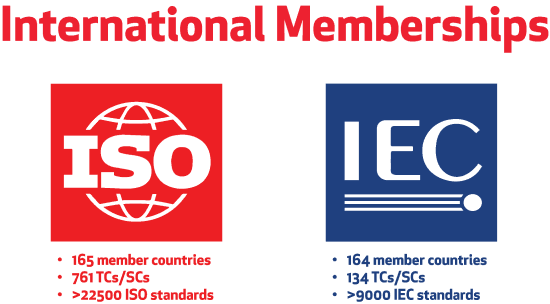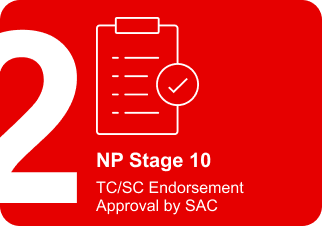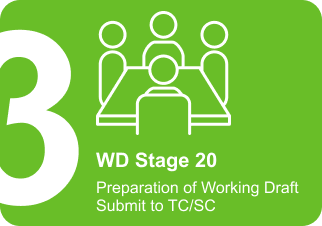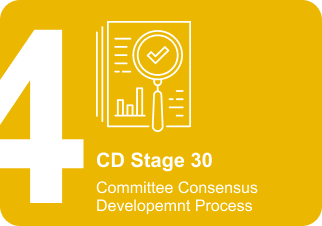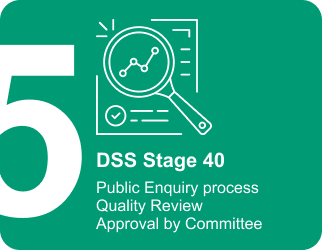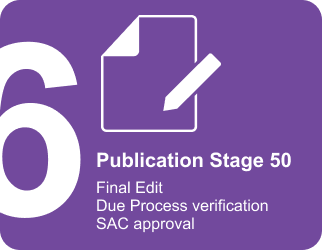1. Introduction to the Joint Competition Law Guide
1.1. This Joint Competition Law Guide (“Guide”) is a collaborative effort by the Competition Commission (“Commission”) and the South African Bureau of Standards (“SABS”). It serves as a non-binding reference for stakeholders.
1.2. Developed under section 21(1)(b) of the Competition Act No. 89 of 1998, as amended (“Competition Act”), its purpose is to enhance public awareness of the Act's provisions. While not legally binding, it may be considered during the standards-setting process.
1.3. The Guide aims to provide broad guidance on competition law issues to all participants in the South African national standards development process, including Chairpersons, representatives of Participating and Observer members, Secretaries of Technical Committees and Sub Committees, as well as Experts and Convenors of SABS Working Groups.
1.4. Despite the pro-competitive benefits of standards development, potential anti-competitive risks arising from communication and deliberations among competitors, both within and outside SABS Technical Committee meetings, cannot be overlooked. The subtle nature of influence that can skew outcomes necessitates specific guidance beyond general rules.
1.5. Both the Commission and SABS acknowledge the need to raise awareness of potential competition harm arising from networks created by competitors during the collaborative standards development process. The Guide outlines the general approach the Commission and SABS will take to assess whether industry and stakeholders have coordinated responses in developing, modifying, or altering standards through SABS processes, and whether such actions substantially prevent or lessen competition in contravention of the Act.
2. Objectives of the Guide
2.1. The primary objective is to provide transparency and objectivity regarding the factors the Commission will consider when determining if a standard is anti-competitive and violates the Act.
2.2. The Guide assists participants, including companies, industry associations, chairpersons, administrators, standard writers, and other relevant stakeholders on standard-setting committees, in identifying and reporting anti-competitive conduct during the standard-setting processes.
3. Background to Standard Setting
3.1. In a globalized economy, standards setting is crucial for both local and international trade, primarily to define technical and quality product requirements. Standards facilitate market access by establishing common product characteristics, allowing producers and suppliers to deliver acceptable products and services. They also offer significant welfare and efficiency gains by providing product variety, uniformity, consumer protection against substandard products, and promoting competition among suppliers. Standards are not regulations but can be referenced by policymakers and regulators to achieve policy or regulatory objectives.
3.2. Beyond welfare and efficiency, the socio-economic effects of standardization include:
-
Compatibility/Interoperability: Ensures products from different suppliers can be used interchangeably, fostering inter-brand competition.
-
Quality and Safety: Guarantees products meet minimum quality and safety requirements, protecting consumers.
-
Variety Reduction: Establishes basic specifications for common product characteristics, leading to simplification.
3.3. Despite these benefits, standard setting involves coordinated action among interested parties, including competitors, which is a condition competition law often prohibits. It can impact market entry and be used by dominant firms to exclude smaller or new entrants, particularly when industry players coordinate their submissions to SABS Technical Committees.
3.4. Standard-setting platforms can also facilitate collusion through the exchange of sensitive business information outside SABS Technical Committees, leading to limited competition, reduced consumer choice, and higher prices.
4. Legal Framework
4.1. This Guide details anti-competitive effects from industry players participating in standard-setting processes that are prohibited by the Act. Such conduct may lead to Commission investigations due to its intent to limit competition, impacting market players and consumers.
4.2. Section 4(1)(a) of the Act prohibits agreements, concerted practices, or decisions between competitors that substantially prevent or lessen competition, unless efficiency benefits outweigh negative effects.
4.3. Section 4(1)(b) explicitly prohibits agreements, concerted practices, or decisions involving: (i) direct or indirect price fixing or other trading conditions; (ii) market division by allocating customers, suppliers, territories, or goods/services; and (iii) collusive tendering. An example of prohibited conduct is the exchange of sensitive business information among competitors outside SABS Technical Committees, which may arise from coordinated submissions to these committees.
4.4. Section 8 of the Act prohibits abuse of dominance by large firms in the standard-setting process who insist on exclusionary requirements in SABS standards, thereby raising barriers to entry for smaller firms.
5. Assessing Anti-Competitive Effects of Standard Setting
5.1. The collaborative nature of standard setting can lead to competing firms coordinating responses and submissions to SABS Technical Committees. Such coordination not only limits competition but also disadvantages SABS Technical Committees by denying them independent views from participants.
5.2. Coordinated submissions by participating firms allow competitors (market incumbents) to abuse the system and maintain market share by advocating for standards and specifications that prevent entry and expansion of new and small market participants.
5.3. Two broad anti-competitive effects can arise from standard setting:
(i) Collusive outcomes, and
(ii) Exclusionary effects.
5.4. Standard setting can lead to collusive outcomes if abused by firms intending to limit market competition. The ability to collude stems from market power, industry influence, or coordination capabilities.
5.5. Standard setting requires collaboration among market participants and stakeholders with relevant expertise, including actual and potential competitors. This process involves extensive dialogue, consultations, and collaboration, placing participants in a position to evaluate competing products against existing standards. Such processes are vulnerable to abuse by groups of firms.
5.6. The collaborative standard-setting process can facilitate collusion and monitor adherence to collusive arrangements, especially when competing firms coordinate responses and submissions both within and outside SABS Technical Committees. Collusion is more likely in homogeneous product markets. Standard setting can minimize product differentiation or result in more observable product specifications, making it easier for competitors to coordinate pricing and monitor behavior.
5.7. Exclusionary effects arise when standards are set to confer market power onto a specific firm/organization, enabling them to disadvantage competitors. Standards can: (i) create entry barriers for smaller firms; (ii) suppress expansion of active firms; and (iii) confer market power to specific firms to the detriment of competitors.
5.8. Firms can abuse the standard-setting process by coordinating responses and/or submissions to maintain and expand their market presence, thereby excluding potential competitors and suppressing growth of existing competitors.
6. Assessment of Anticompetitive Effects in Standard Setting
6.1. Standard setting is a platform where competitors can engage in anti-competitive behaviors by coordinating their responses and/or submissions to relevant SABS Technical Committees.
6.2. This section provides general guidelines for participants in standard-setting processes.
6.3. Standard setting in South Africa is managed by SABS through its Technical Committees, Subcommittees, and Working Groups, with stakeholder representatives including academics, researchers, government entities, regulators, consumers, and industry participants. Ideally, these standards should be widely representative and not pose competition risks, as all stakeholder interests are considered. However, coordinated responses or submissions from firms can lead to outcomes biased towards particular market players.
6.4. Standards address product specifications and characteristics, leading manufacturers and suppliers to protect their commercial interests, potentially at the expense of competitors. Certain firms or industry associations with significant market representation may possess enough power to influence industry functioning and the standard-setting process.
6.5. The Commission advises participants to be vigilant about direct or indirect anti-competitive conduct during discussions and/or submissions to SABS Technical Committees, and to report any suspicious discussions or submissions regarding standards development.
6.6. Competitors inherently seek to protect their products and market share. They may enter into collusive agreements, tacitly or explicitly, to limit competition. Tacit agreements involve indirect communication to reduce detection, while explicit agreements involve direct communication (e.g., face-to-face meetings, written exchanges) and are more easily identifiable.
6.7. As a general guide, it is crucial to remain vigilant about competitor conduct and underlying interests that may not be immediately obvious.
6.8. The SABS public participation process is vital for inclusive standard setting, preventing the exclusion of firms from entering, participating, or expanding in the market. Business interests in protecting profits and maintaining market share can lead to conduct undermining market competition. The following are guidelines for participants in standard-setting processes:
7. Do’s and Don’ts for Participants in the Standard Setting Process
Do
- Remember that standardization aims to support global competition and the South African economy for the benefit of industry, consumers, and society.
- Ensure early disclosure of intellectual property rights essential for standard implementation.
- Ensure participants possess the necessary technical expertise.
- Follow SABS rules and procedures, including the SABS Code of Conduct.
- Adhere to SABS Patent rights as stated in clause 11 of SABS National Norm, National Norm for the development of South African National Standards.
- Review and clear meeting agendas in advance to ensure consistency with Competition Law, and strictly adhere to the agenda during meetings.
- Ensure a transparent and open standards-setting process, including participation and information exchange strictly in accordance with the latest edition of SABS National Norm - National Norm for the Development of South African National Standards.
- Carefully consider if any potential or actual information exchange could predict a participating competitor's future commercial behavior, and refrain from sharing such information.
- Feel free to use and share public domain information, including historical and aggregated industry data (that doesn’t identify individual business pricing or commercial strategy), but avoid discussions on future strategy.
- Always state that you cannot discuss matters that might contravene Competition Law; immediately terminate such conversations; keep a record; and report it to your company or organization and to the Commission and/or the SABS’s legal team as soon as possible.
- Take immediate action if anti-competitive behavior continues, including suspending the meeting, removing misbehaving participants, cautioning others, and adjourning the meeting if necessary.
- Ensure meeting notes accurately reflect discussions and decisions, including any concerns about Competition Law compliance.
Don’ts
- Don’t discuss competitively sensitive information that competition authorities might suspect could lead to anti-competitive behavior.
- Don’t exchange or discuss commercially sensitive or strategic information with competitors, including, but not limited to:
- Price data;
- License conditions (e.g., with distributors);
- Discounts;
- Timing of pricing changes;
- Profits; profit margins;
- Cost data;
- Market share;
- Customer lists;
- Supply or marketing schedules;
- Bidding behavior;
- Any future developments, trends, or market conditions in your industry that might impact competition; or
- Any other information that might allow competitors to adapt their business strategies.
- Don’t fix prices or price-related conditions with competitors.
- Don’t arrange market sharing with competitors, including allocation of territories, customers, distributors, or suppliers.
- Don’t include elements in standards that exclude suppliers or competitors from the marketplace for reasons other than technical considerations.
- Don’t use standardization objectives as an excuse to elicit sensitive market, strategy, or business information from competitors.
For More Information:
Please contact the Competition Commission South Africa:
WhatsApp / SMS Line: +27 (0) 84 743 0000
Email: ccsa@compcom.co.za
Website: www.compcom.co.za
Tel: +27 12 428 7911 or +27 0 861 27 7227
You can also contact the South African Bureau of Standards:
Website: www.sabs.co.za
Email: info@sabs.co.za
Tel: +27 12 428 7911
Download PDF - CC_SABS-Competition-Law-Guideline-1.pdf


